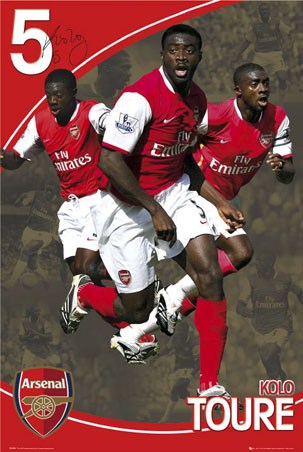advertisement
Manchester United
FACTS
Nickname :Red Devils
Formed :1878
Stadium :Old Trafford
Manager :Alex Ferguson
UEFA Cups (1) :1990
League Titles (19) :1907-08, 1910-11, 1951-52, 1955-56, 1956-57,
1964-65, 1966-67, 1992-93, 1993-94,1995-96, 1996-97, 1998-99, 1999-2000,
2000-01, 2002-03, 2006-07, 2007-08, 2008-09, 2010-11
FA Cups (11) :1908-09, 1947-48, 1962-63, 1976-77, 1982-83, 1984-85,
1989-90, 1993-94, 1995-96, 1998-99,2003-04
League Cups (4) :1991-92, 2005-06, 2008-09, 2009-10
European Cups (3) :1967-68, 1998-99, 2007-08
Biggest Signing :30.75 mn pounds, Dimitar Berbatov from Tottenham
Hotspur, August 2008-2009
Biggest Sale :80 mn pounds, Cristiano Ronaldo to Real Madrid, August
2009/10
Leading goalscorer :Bobby Charlton, 249
Leading appearances :Ryan Giggs, 878*
Read more at:
http://ibnlive.in.com/worldoffootball/club/facts/manchester-united.html?utm_source=ref_article
Nickname :Red Devils
Formed :1878
Stadium :Old Trafford
Manager :Alex Ferguson
UEFA Cups (1) :1990
League Titles (19) :1907-08, 1910-11, 1951-52, 1955-56, 1956-57,
1964-65, 1966-67, 1992-93, 1993-94,1995-96, 1996-97, 1998-99, 1999-2000,
2000-01, 2002-03, 2006-07, 2007-08, 2008-09, 2010-11
FA Cups (11) :1908-09, 1947-48, 1962-63, 1976-77, 1982-83, 1984-85,
1989-90, 1993-94, 1995-96, 1998-99,2003-04
League Cups (4) :1991-92, 2005-06, 2008-09, 2009-10
European Cups (3) :1967-68, 1998-99, 2007-08
Biggest Signing :30.75 mn pounds, Dimitar Berbatov from Tottenham
Hotspur, August 2008-2009
Biggest Sale :80 mn pounds, Cristiano Ronaldo to Real Madrid, August
2009/10
Leading goalscorer :Bobby Charlton, 249
Leading appearances :Ryan Giggs, 878*
Read more at:
http://ibnlive.in.com/worldoffootball/club/facts/manchester-united.html?utm_source=ref_article
Nick name: Red Devils
Formed: 1878
Stadium: Old trafford
Manager: David Moyes
UEFA: 1990
League Titles: 1907–08, 1910–11, 1951–52, 1955–56, 1956–57, 1964–65, 1966–67, 1992–93, 1993–94, 1995–96, 1996–97, 1998–99, 1999–2000, 2000–01, 2002–03, 2006–07, 2007–08, 2008–09, 2010–11, 2012–13
FA Cup: 1908–09, 1947–48, 1962–63, 1976–77, 1982–83, 1984–85, 1989–90, 1993–94, 1995–96, 1998–99, 2003–04
League Cup: 1991–92, 2005–06, 2008–09, 2009–10
FA Charity/Community Shield: 1908, 1911, 1952, 1956, 1957, 1965*, 1967*, 1977*, 1983, 1990*, 1993, 1994, 1996, 1997, 2003, 2007, 2008, 2010, 2011, 2013
European Cup/ UEFA Champions League: 1967–68, 1998–99, 2007–08
UEFA cup winners Cup: 1990/91
UEFA Super Cup: 1991
International Cup: 1999
FIFA Club World Cup: 2008
Managers
Other facts
Manchester United is one of the most successful English football clubs,
has huge world-wide support, and in 2010 was listed by Deloitte as the
3rd richest football club in the world.
Manchester United was one of the first English teams to play in Europe (1956-1957) and the first to win the European Cup (1967-1968).
Manchester United is the only English team to win the treble of League Championship, FA Cup and European Cup/Champions League (1998-1999).
Manchester United’s history includes tragedy.
Returning from a European Cup game in February 1958, the plane carrying
the team crashed on take-off in Munich. Twenty-three people died,
including eight players.
Manchester United began in 1878 as Newton Heath LYR (Lancashire and
Yorkshire Railway). The club became Manchester United in 1902.
Old Trafford was built and became the club’s home ground in 1910.
Old Trafford was bombed during the second world war. It needed re-building after the war and wasn’t usable again until 1949.
Manchester United was the first club to have a successful youth policy. In the 1950s ‘Busby’s babes’ achieved considerable success.
Busby’s assistant throughout his years as manager was Welshman, Jimmy Murphy.
Between 1966-1967 and 1992-1993,
Manchester United went 26 years without being league champions. The
club's longest period without a trophy lasted 37 years between winning
the league championship in 1910-1911 and the FA Cup in 1947-1948.
Manchester United was last relegated in 1973-1974. Denis Law, playing then for Manchester City, scored the goal that sent them down.
Sir Alex Ferguson has been the most successful manager in English football history.
Manchester United has won the league championship 19 times. (Winning the title in 2010-2011 took Manchester United beyond Liverpool who has won the title 18 times.)
Manchester United has won the FA Cup 11 times - more than any other club. (Arsenal has won the FA Cup 10 times.)
League Titles (19)
:1907-08, 1910-11, 1951-52, 1955-56, 1956-57, 1964-65, 1966-67, 1992-93,
1993-94,1995-96, 1996-97, 1998-99, 1999-2000, 2000-01, 2002-03,
2006-07, 2007-08, 2008-09, 2010-11
Read more at:
http://ibnlive.in.com/worldoffootball/club/facts/manchester-united.html?utm_source=ref_article
Nickname :Red Devils
Formed :1878
Stadium :Old Trafford
Manager :Alex Ferguson
UEFA Cups (1) :1990
League Titles (19) :1907-08, 1910-11, 1951-52, 1955-56, 1956-57,
1964-65, 1966-67, 1992-93, 1993-94,1995-96, 1996-97, 1998-99, 1999-2000,
2000-01, 2002-03, 2006-07, 2007-08, 2008-09, 2010-11
FA Cups (11) :1908-09, 1947-48, 1962-63, 1976-77, 1982-83, 1984-85,
1989-90, 1993-94, 1995-96, 1998-99,2003-04
League Cups (4) :1991-92, 2005-06, 2008-09, 2009-10
European Cups (3) :1967-68, 1998-99, 2007-08
Biggest Signing :30.75 mn pounds, Dimitar Berbatov from Tottenham
Hotspur, August 2008-2009
Biggest Sale :80 mn pounds, Cristiano Ronaldo to Real Madrid, August
2009/10
Leading goalscorer :Bobby Charlton, 249
Leading appearances :Ryan Giggs, 878*
Read more at: http://ibnlive.in.com/worldoffootball/club/facts/manchester-united.html?utm_source=ref_article
Nickname :Red Devils
Formed :1878
Stadium :Old Trafford
Manager :Alex Ferguson
UEFA Cups (1) :1990
League Titles (19) :1907-08, 1910-11, 1951-52, 1955-56, 1956-57,
1964-65, 1966-67, 1992-93, 1993-94,1995-96, 1996-97, 1998-99, 1999-2000,
2000-01, 2002-03, 2006-07, 2007-08, 2008-09, 2010-11
FA Cups (11) :1908-09, 1947-48, 1962-63, 1976-77, 1982-83, 1984-85,
1989-90, 1993-94, 1995-96, 1998-99,2003-04
League Cups (4) :1991-92, 2005-06, 2008-09, 2009-10
European Cups (3) :1967-68, 1998-99, 2007-08
Biggest Signing :30.75 mn pounds, Dimitar Berbatov from Tottenham
Hotspur, August 2008-2009
Biggest Sale :80 mn pounds, Cristiano Ronaldo to Real Madrid, August
2009/10
Leading goalscorer :Bobby Charlton, 249
Leading appearances :Ryan Giggs, 878*
Read more at: http://ibnlive.in.com/worldoffootball/club/facts/manchester-united.html?utm_source=ref_arti
Posters/Adverts
Film








.jpg)
































































































